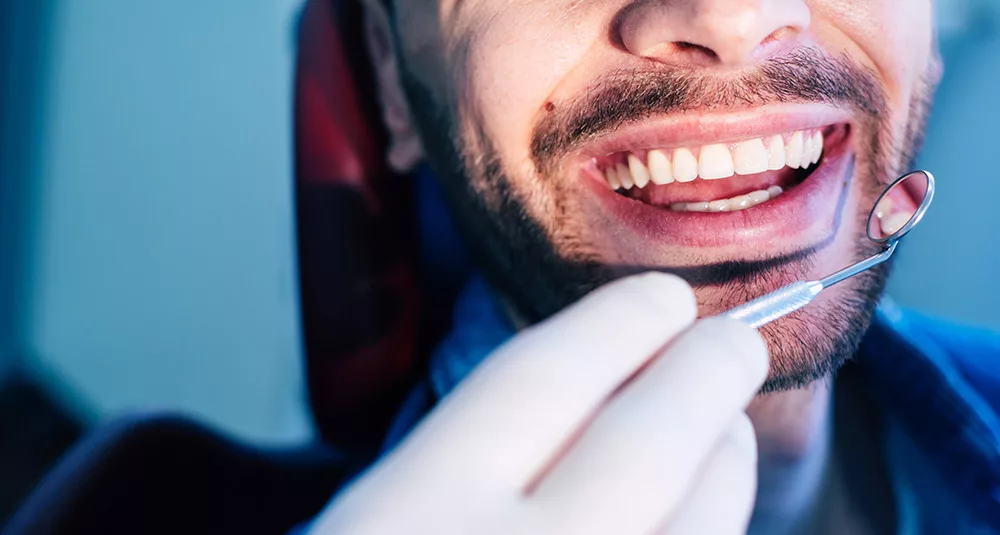
Understanding Smiles Part 1
Smile behavior is influenced by the individual’s feelings about their smile.
Smiles are an integral part of human communication. They make us appear more attractive, approachable, happy, agreeable, and attentive. Studies have shown that people who are happy with their smiles are more confident, have a greater sense of well-being, and this is also reflected in their behavior. In one study, subjects were shown photos of people with nice smiles. The subjects deemed these people as being more socially competent, with greater intellectual achievement and better psychological adjustment. These smiles are contagious and It’s easy to reciprocate when someone gives you that “genuine smile.” We’ve all seen this smile, but what makes it genuine?
There are a variety of smiles that reflect a wide array of emotions. From flirtatious to embarrassed, our smiles reflect our mood and communicate our thoughts. Or do they? When people are unhappy with the appearance of their smile they present a variety of guarding. There’s upper lip guarding, lower lip guarding, both lips guarding, covering one’s mouth with a hand, and of course close lip grins.
As dentists, we must be able to spend time with our patients, to see those smiles, and to delve into why a patient may be guarding. In a sense, we must become esthetic psychologists. It is not an overstatement to say that as dentists, we don’t just change teeth; we can change lives. We can shape how others see our patients. If a patient cannot give a genuine unencumbered smile, perhaps, they’ll miss an employment opportunity or meeting that special someone. Perhaps they’ll be seen by others as unfriendly or unapproachable.
So, is there a “genuine smile” that can be quantified? In the 1800s, a French anatomist by the name of Guillaume Duchenne sought to answer that question. Duchenne, through stimulating facial muscles, found that the most genuine, sincere smile occurred when 3 muscle groups fired: the orbicularis oris and zygomaticus major in the mouth and the orbicularis oculi of the eye forming crows’ feet.
Most consider the resulting Duchenne smile to be the genuine smile that is spontaneous and sincere. Studies have shown that this type of smile can elevate mood, change body stress response, and is responsible for the release of endorphins, dopamine, and serotonin. In all, the Duchenne smile is the Holy Grail. It is certainly about the smile but a major component is the formation of crows’ feet around the eyes. Just think of the song When Irish Eyes Are Smiling. The Duchenne smile in all its splendor is sure to steal your heart away. My point is that we need to remember that the Duchenne smile is about the mouth AND the eyes; these elements are interconnected.
What we’ll need to evaluate as Dentists is whether Botox injections and plastic surgery affect the Duchenne smile. Certainly, in the case of the Botox smile, the answer is yes since the elevator muscles of the mouth are injected thus altering the Duchenne muscle contractions. Obviously, it is vital then to take a good health history and determine whether a patient is smile guarding or simply cannot fire the muscles that make up the Duchenne smile.
In making dental changes, we change lives. We shape how others see our patients and how they see themselves. This is priceless work. It is worthy work. But until a patient desires the best results that today’s dentistry can achieve and trusts us to execute the technical aspects of their new smile, we are in listening, understanding, and guidance mode. We are leading them forward with primary, essential care and taking them on a long journey to achieve what is possible. With each new dental restoration, they may smile more broadly and lift their head higher. They will feel the release of endorphins and serotonins. They will experience the positivity of greater self-confidence.
Artful comprehensive dentists are like behavioral psychologists who have the sincere intention of doing their utmost for the benefit of their patients.
You know what greater smile benefits are possible if the patient understands and wants to continue with aesthetic treatment. Patience is a virtue. So, spark the curiosity of your patients and lead gently but with confidence. Never forget that a patient who is concerned about the cost of elective treatment today will be thanking you profusely two to three years from now and saying the decision to move forward with a comprehensive smile makeover was one of the best decisions of their life.
Related Course
E2: Occlusal Appliances & Equilibration
DATE: May 3 2025 @ 8:00 am - May 7 2026 @ 2:30 pmLocation: The Pankey Institute
CE HOURS: 44
Dentist Tuition: $ 7500
Single Occupancy with Ensuite Private Bath (per night): $ 355
What if you had one tool that increased comprehensive case acceptance, managed patients with moderate to high functional risk, verified centric relation and treated signs and symptoms of TMD? Appliance…
Learn More>






